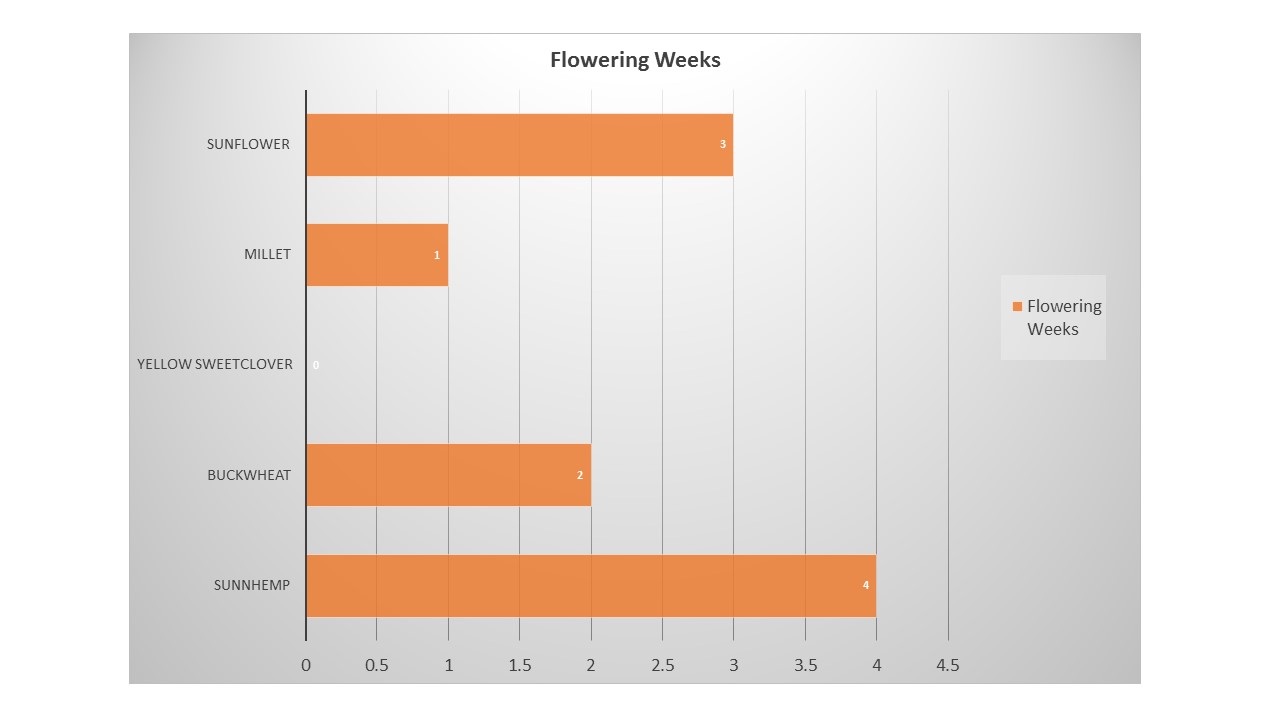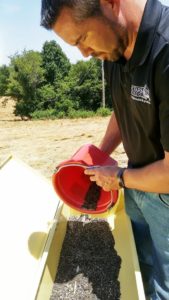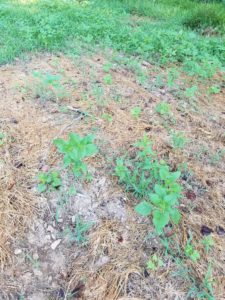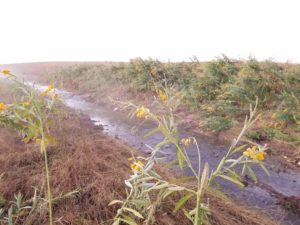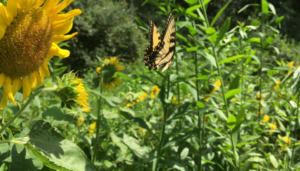Growing Plants for Biodiversity on the Farm- 2018 Project
go.ncsu.edu/readext?946004
en Español / em Português
El inglés es el idioma de control de esta página. En la medida en que haya algún conflicto entre la traducción al inglés y la traducción, el inglés prevalece.
Al hacer clic en el enlace de traducción se activa un servicio de traducción gratuito para convertir la página al español. Al igual que con cualquier traducción por Internet, la conversión no es sensible al contexto y puede que no traduzca el texto en su significado original. NC State Extension no garantiza la exactitud del texto traducido. Por favor, tenga en cuenta que algunas aplicaciones y/o servicios pueden no funcionar como se espera cuando se traducen.
Português
Inglês é o idioma de controle desta página. Na medida que haja algum conflito entre o texto original em Inglês e a tradução, o Inglês prevalece.
Ao clicar no link de tradução, um serviço gratuito de tradução será ativado para converter a página para o Português. Como em qualquer tradução pela internet, a conversão não é sensivel ao contexto e pode não ocorrer a tradução para o significado orginal. O serviço de Extensão da Carolina do Norte (NC State Extension) não garante a exatidão do texto traduzido. Por favor, observe que algumas funções ou serviços podem não funcionar como esperado após a tradução.
English
English is the controlling language of this page. To the extent there is any conflict between the English text and the translation, English controls.
Clicking on the translation link activates a free translation service to convert the page to Spanish. As with any Internet translation, the conversion is not context-sensitive and may not translate the text to its original meaning. NC State Extension does not guarantee the accuracy of the translated text. Please note that some applications and/or services may not function as expected when translated.
Collapse ▲An on-farm applied study of using “farmscaping” and beneficial planting principles on farms of all scale.
Introduction
The idea of growing a crop with the purpose of benefiting others is nothing new to agriculture. Cover cropping, nurse crops, and interactions between neighboring plants has long been used and studied as means to improve agricultural and natural interactions. In this on-farm study, diverse plots were planted in the marginal field areas that are either difficult to plant, poor yielding, subject to erosion, or otherwise neglected. Planting a mixture of warm-season plants is intended to provide: habitat for beneficial insects and wildlife, flowers for pollinators, biomass for soil structure, and weed suppression through good leaf canopy cover. This qualitative research of the planted biodiversity crops will consider the establishment techniques, species selection, timing, and benefits for agriculture systems of any scale.
Plot Descriptions
Six plots were planted (totaling 6 acres of plots):
- Two Field Crop Commodity Farms
- One Blueberry Farm with wildlife management goals
- One Blueberry and Vegetable Farm
- One small acreage sustenance farm with a horse operation
Mix Planted
Buckwheat – Cool season and Summer annual that covers soil quickly and produces a flower in 70 days. For weed suppression, Phosphorus scavenging, nectar source, and soil erosion reduction due to fine fibrous roots.
Sunflower– Native summer annual. Produces large amounts of biomass and provides pollen for bees. Semi-drought tolerant and quick growing. Sunflower also provides a large root mass that is beneficial in maintaining soil structure and reducing erosion effects. Research shows a reduction in corn borer, soybean cyst, and other crop pests with sunflower production in a crop rotation.
Sunn Hemp -Sunn Hemp is a tall, herbaceous, warm-season, annual legume producing up to 120 lbs of Nitrogen and 5,000 lbs of dry matter per acre in just 9 to 12 weeks. Adapted to poor soils and has rapid growth (up to 9 ft). Potential to improve soil quality, reduce soil erosion, conserve soil moisture, suppress weeds and nematodes, recycle plant nutrients, as well as provide insectary habitat.
Yellow Sweet Clover – Biennial forming large plants with lots of biomass (up to 8,500 lbs per acre in 2 years) and having a strong taproot that breaks up compacted soils. The flowers attract honeybees, tachnid flies, and large predatory wasps. This plant is highly adapted to drought and poor soil.
Brown Top Millet- Annual, warm-season grass. Fast growing cover to suppress weeds, provide cover for wildlife and insects, reduce erosion, and prevent wind damage. Also known to suppress Root-knot Nematodes. Large seed production provides food for small wildlife.
Ratio of Mix
| Buckwheat | 20 lbs |
| Sunn Hemp | 7 lbs |
| Sunflower | 4 lbs |
| Browntop Millet | 4 lbs |
| Yellow Sweet Clover | 3 lbs |

Filling seed mix in seed drill.
Methods
Utilizing a 5-foot, no-till drill pulled by a minimum of a 50-60 horsepower tractor, the seed mix was planted at a rate of 38 pounds per acre. The drill was adjusted and calibrated to that rate and a planting depth of about 1.25″-1.5″.

Tractor pulling no-till drill to plant between power poles and the road in a non-cultivated strip.
The planting dates ranged from June 15 to June 28, 2018
The drill was followed and checked to ensure good seed placement and distribution.
Each site was chosen based on the objectives of the producer. The sites all were typically uncultivated or marginally productive.
Each site was observed weekly for 16 weeks for: germination, growth, flowering period, insect frequencies, and stand quality.
Observations
During the process of planting and growing the six plots for biodiversity, there were several observations made regarding the viability of such practices in an efficient farming system. Observations were made weekly and compared to each cooperating producer’s thoughts and experience. The overall observations were focused around planting preparation, germination, stand coverage of soil, heat/drought tolerance, flowering period, and beneficial and pest insect prevalence.
A rating was given to each planting site to represent the observed stand coverage throughout the season. Based on this year’s plots, the shallow-tilled soil in low land produced the quickest and most consistent coverage to reduce soil erosion, suppress weeds, and provide habitat.
Each species in the plantings was rated (1= based on overall germination across all six sites. The Sunflower, Sunn Hemp and Buckwheat germinated most uniformly across all six sites. Although, Sunn Hemp appeared to lay latent for some time and be most tolerant, during germination, to lack of soil moisture, heat, and other stresses.
The following chart illustrates an overall rating of heat and drought tolerance of all six plots. The Site C was most drought resistant, however it was in bottom-land. Consistently, Sunn Hemp proved in this study to be the most drought tolerant. In two of the plots with the most sparse germination and stunted growth due to drought, the Sunn Hemp was found to outnumber all other species by 60%. Buckwheat was quick to stunt and prematurely flower in the dry conditions.
A major objective of this type of planting is to have a succession of long-standing flowers for pollinator insects. Each species was charted and the sum averaged across all sites to determine the duration of flowering. Sunn Hemp flowered the longest, but was also the last to flower, standing and flowering until frost. Buckwheat was the first to flower across all six sites, but is fairly short-lived. Millet produced a small window of flowering of just about a week. Yellow Sweet Clover was a complete loss due to drought and heat.
Random observations and photos were taken of the plots during the growing season to record prevalence of beneficial insects and pest. Care was not taken to distinguish each species of insect, but a general rating was made at each visit to the plots. A black beat cloth (36”x28”) was used to make a quick rating of easily identified insects on the project plants.
All observation ratings were averaged from the five observations.
It was observed that Buckwheat had a higher count of pollinators and parasitic insects. In one of the video shots, the sound of honeybees made it difficult to record quality sound. Sunn Hemp maintained a high frequency of beneficial insects and pests.

Insect prevalence was rated on a scale of 1-5 (5 being greatest prevalence) for each species planted.
The following table details the type of site and soil preparation of each plot. All no-till sites had considerable layer of residue.
Soil Preparation for Each Site
| Site A | Site B | Site C | Site D | Site E | Site F |
|---|---|---|---|---|---|
| No Till | No Till | Shallow Till | No Till | No Till | Shallow Till |
| Field Crops | Field Crops | Wildlife Plot/Diversified Farm | Field Crops | Blueberry Farm | Horse & Diversified Vegetable Farm |
See the image below or download the Growing Plants for Biodiversity on the Farm Factsheet.








